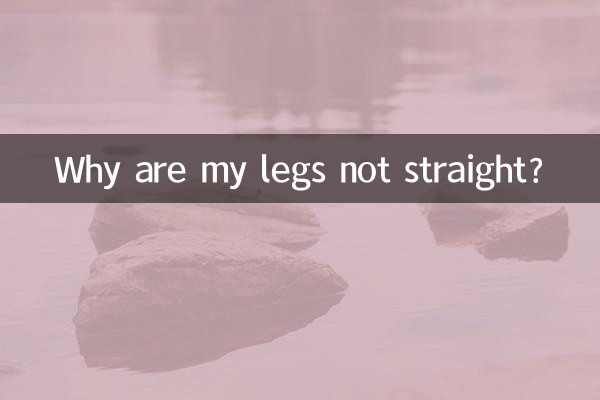Why are the legs not straight? Analysis of 10 common causes and improvement methods
Recently, discussions about leg shape issues have become increasingly popular on social media, especially topics related to "not straight legs" that have attracted widespread attention. This article will combine the popular discussions on the Internet in the past 10 days, analyze the common causes of leg imbalance from a scientific perspective, and provide structured data and practical suggestions.
1. Analysis of 10 common reasons why legs are not straight

| Ranking | reason | Proportion | High-risk groups |
|---|---|---|---|
| 1 | bad posture habits | 32% | Sedentary office workers/students |
| 2 | congenital skeletal dysplasia | 18% | teenager |
| 3 | muscle imbalance | 15% | sports enthusiast |
| 4 | sequelae of rickets | 8% | Middle-aged and elderly people |
| 5 | pelvic tilt | 7% | postpartum women |
| 6 | flatfoot | 6% | children and teenagers |
| 7 | sequelae of trauma | 5% | athlete |
| 8 | Overweight | 4% | obese people |
| 9 | premature weight bearing | 3% | infants |
| 10 | arthritis | 2% | elderly group |
2. Recent hot topics of discussion
According to network data analysis in the past 10 days, the following three topics are the most discussed:
1.The dangers of "crossing one's legs": Experts point out that maintaining this posture for a long time will cause the pelvis to tilt, which will lead to knee valgus. The related topic has been read more than 200 million times.
2.Critical period for children's leg development: Pediatricians emphasize that the age of 3-6 is the golden period for correction. Improper use of walkers may cause O-shaped legs, which has aroused widespread concern among parents.
3.Safety of internet celebrity corrective devices: The "leg correction belt" recommended by a short video platform was exposed to be a health risk, and the regulatory authorities have intervened in the investigation.
3. Scientific methods to improve leg shape
| Question type | Improvement methods | Effective cycle |
|---|---|---|
| Functional legs are not straight | Muscle stretching + strength training | 3-6 months |
| mild skeletal abnormality | Custom orthopedic insoles | 6-12 months |
| severe structural abnormality | Orthopedic surgical intervention | 1-2 years recovery period |
4. Professional advice
1.daily posture adjustments: Keep your feet parallel when standing, with weight evenly distributed on both legs; avoid buckling your knees in when sitting.
2.Targeted training: It is recommended to squat against the wall, lie on your side and raise your legs, etc. 15 minutes a day can effectively improve muscle strength imbalance.
3.Nutritional supplements: Adolescents should ensure a daily intake of 600IU vitamin D to prevent leg problems caused by rickets.
5. Pseudoscience to be wary of
The "7-day correction of O-shaped legs" and "sleeping with leggings" recently circulated on the Internet lack medical basis and may cause ligament damage. Experts suggest that you should seek medical treatment promptly when you discover a problem, rather than trusting online remedies.
In summary, the reasons for leg imbalance are complex and diverse, and targeted measures need to be taken according to the specific causes. Through scientific understanding and correct intervention, most functional leg problems can be effectively improved. If you have related problems, it is recommended to consult an orthopedic or rehabilitation specialist first.

check the details

check the details